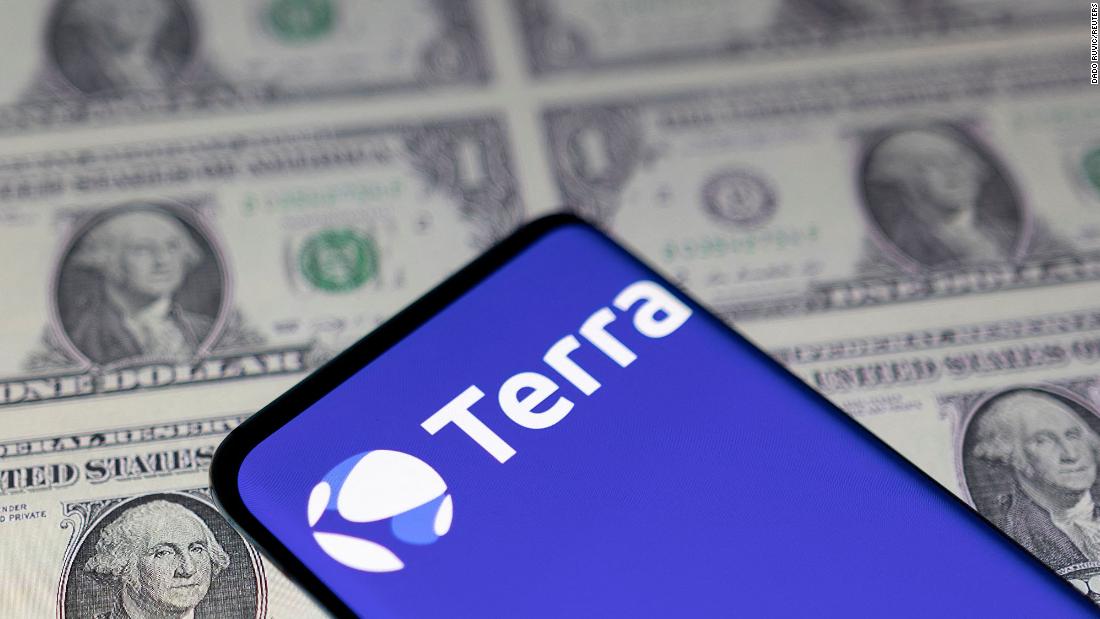

This week, one in style so-called algo coin cratered, wiping out billions of bucks’ value of worth in only a few days.
The coin, referred to as TerraUSD, is designed to care for its worth at $1, endlessly and ever, amen. As an alternative, it fell as little as 23 cents Wednesday sooner than improving some flooring. It was once soaring round 60 cents early Thursday.
To critics of the arguable crypto product, it is an “emperor has no garments” second. Or, extra pessimistically, a Lehman Brothers second.
To know what is going on on this nook of the crypto marketplace, it’s a must to perceive what those newfangled making an investment merchandise are and the way they paintings.
What is a stablecoin?
Maximum stablecoins are tightly pegged to a standard fiat forex, equivalent to the USA buck, or to a commodity like gold. Traders purchase them to retailer cash and facilitate offers inside the cryptocurrency infrastructure. Additionally they are used for different sorts of monetary exchanges, equivalent to lending, borrowing or sending bills in a foreign country with much less friction than going via a standard financial institution.
Their purported balance has grew to become those as soon as difficult to understand tokens into the bedrock of the crypto ecosystem. The collective marketplace worth of all stablecoins has grown to $180 billion as of March this yr, consistent with the Federal Reserve.
However do not let the identify idiot you: Now not all stablecoins are strong, in keeping with se.
Some stablecoins have a 1-to-1 connection to genuine belongings, like US Treasury expenses. Some are related to bonds, which will range in worth.
However it is stablecoin’s wayward cousin, the “algorithmic stablecoin” that induced a panic amongst traders this week. And whilst they sound equivalent, the algorithmic selection are, functionally, some other beast completely.
The risky coin?
Maximum stablecoins are subsidized via real-world collateral equivalent to bucks or money equivalents. However algorthmic stablecoins are not essentially subsidized via any genuine exterior asset, depending on complicated monetary engineering to carry their worth stable. And once they fall, they have a tendency to fall onerous — trade watchers name this a “loss of life spiral.”
Algorithmic cash are “only a fancy approach of claiming, ‘We’re going to say that that is value a buck as a result of it is subsidized via some other asset that we additionally create out of skinny air,'” says Charles Cascarilla, the manager govt and co-founder of Paxos, a blockchain infrastructure company.
With regards to TerraUSD, that different “out of skinny air” asset is the cryptocurrency Luna.
This is the way it works:
- An investor can, in concept, trade one Terra for for a buck’s value of Luna, its sister token whose worth is not mounted.
- Investors who interact in a procedure referred to as arbitrage are in a position to make a snappy benefit via exploiting fluctuations in both asset — growing an incentive to carry Terra’s worth stable at $1. As an example, if Terra drops underneath a buck, arbitrage investors swoop in to shop for Terra at the reasonable and trade it for $1 value of Luna.
- This ultimately creates an ecosystem through which investors trade Lunas and Terras to stay the price of Terra at $1.
The issue is that all the ecosystem depends upon investors believing Luna has worth. As soon as traders lose religion within the device, all bets are off.
“Any morning, folks may get up and say ‘”‘wait a minute, you simply made up this all up, it is nugatory,’ and make a decision to offload their Lunas and Terras,” wrote Bloomberg columnist Matt Levine.
That seems to be what took place this week. The wheels began to return off over the weekend, when traders started to drag out of each Terra and Luna.
“That is precisely the ‘loss of life spiral’ numerous folks predicted,” mentioned Henry Elder, head of decentralized belongings at Wave Monetary, a virtual asset supervisor.
What occurs subsequent?
Stablecoin advocates warn that is no time to throw the child out with the bathwater, noting that currency-backed stablecoins like Tether and USDCoin held stable all the way through Terra’s meltdown this week.
Traders and regulators on edge
Bitcoin, the sector’s greatest cryptocurrency, has additionally suffered from the souring temper in crypto.
Early Thursday, the crypto was once buying and selling at round $28,000, down greater than 12% over 24 hours. (Bitcoin, like different cryptocurrencies, business 24 hours an afternoon, seven days per week.)
Crypto belongings nonetheless make up a small a part of the wider monetary device. However robust folks like Treasury Secretary Janet Yellen are paying consideration, nervous that the location may create nasty and unpredictable aftershocks for traders of all stripes.
Attesting sooner than the Senate previous this week, Yellen commented on Terra’s decline, pronouncing it “merely illustrates that this can be a all of a sudden rising product and that there are dangers to monetary balance.”
Additionally this week, Yellen warned that stablecoins stay “at risk of runs” as a result of some are subsidized via belongings that can lose worth or grow to be illiquid in instances of rigidity.
Crypto evangelists have a tendency to peer meltdowns like Terra’s as an unlucky loss, however one who in the long run is helping strengthen the credibility of the underlying blockchain era.
“I do suppose that the winnowing procedure of excellent concepts and questionable concepts in the long run makes the ecosystem more potent,” Paxos’ Cascarilla says. “The financial system is completely moving to the velocity of the web, however the monetary device continues to be operating on the velocity of the, of the put up place of job… Sadly, there are those moments of inventive destruction that in truth finally end up being one of the easiest tactics of roughly narrowing issues all the way down to what folks can in reality get at the back of.”
—CNN Trade’ Julia Horowitz contributed reporting.
